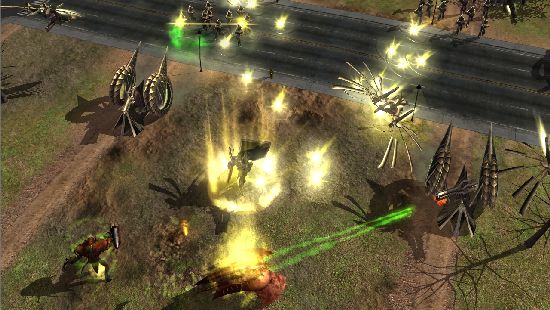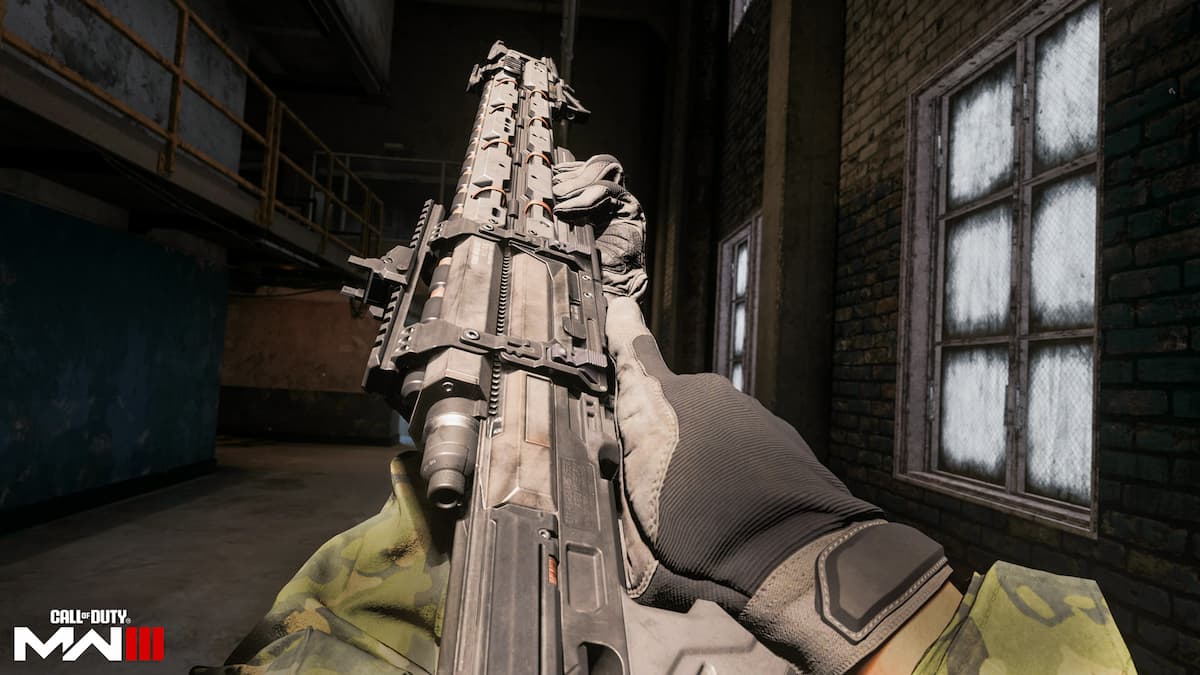I’d like to think that one of the most impressive tests of a game is the verdict rendered by a player who isn’t necessarily an enthusiast of that particular genre. It’s certainly not an opinion that you’d necessarily stack above and beyond that of the hardcore fan, but let me put it this way: if you can make a true believer out of a relative newbie, you’ve got to be doing something right, yeah?
I’ve spent a fair amount of time away from the RTS genre, propelled perhaps by the same fatigue kicked up through the glut of WWII first-person shooters — barring some particularly unusual exceptions, I’ve had difficulty maintaining an interest in the post-Starcraft world of real-time strategy. My experiences have been largely uniform: counter one sort of unit with another, build build (build), maintain a steady flow of resources and flood the enemy’s base until they’re consumed in the fires of war.
I was surprised, then, to learn that my biggest objections to the RTS genre became the strongest foundations for Petroglyph’s Universe at War; an original IP brought to you by the fine folks who kicked off the RTS genre way back with Dune II, UaW doesn’t lie when it promises three truly unique and diverse factions to play. I had the opportunity to spend a couple of hours at Petroglyph’s offices to formally introduce myself to the game, and while I still suck something mighty at RTS games (and, therefore, Universe at War), it’s intriguing enough that I want to improve and refine my technique in an effort to not suck. This is a big step for yours truly, and a sure sign that Petroglyph’s got something special on their hands.
While the genre has long since moved away from races and factions amounting to little more than art swaps, it can still be argued that true diversity is still shaky ground for RTS development teams — after all, it’s damn difficult to maintain an appropriate balance while really differentiating the available camps. While I could talk up and down about the ways in which the art style, combat strategies and other factors set the UaW factions apart from one another, I’d rather just quote one of the other players at the event: “It’s like playing three different games.” I’d tend to agree.
Those of you who have been following the game’s development closely are likely already familiar with the factions — the Masari, the Hierarchy, and the Novus — but until you’re behind the wheel of a Hierarchy Walker, it’s difficult to get a sense of just how bloody different they feel. I’ll kick things off with the most basic of the three, the Masari — basic being a relative term, of course. The Masari are likely to be the most familiar “out of the box” to RTS players, offering structures like turrets, upgrade buildings that allow for more advanced units, and a series of ground and air support troops. For an added twist, the Masari can be swapped between “light” and “dark” modes, both of which offer their own advantages. In light mode, units receive fire-type damage, an expanded sight range and the ability for some units to go airborne. In dark mode, units are granted faster movement, a dark armor shield and additional effects on their dark matter attacks. The nature of combat can be switched up with a single click, making for an interesting dynamic when playing as or against the Masari.
In introducing the group to the Novus, the developers billed the faction as fast-paced and perfect for micro-managers, which is pretty accurate — alas, this means I’m doomed to almost always suck with this particular faction, which is a real pity when you get a feel for just how badass they can be. Key to Novus play is the Flow, a series of conduits which not only power your structures but also provide a means of fast travel to anywhere you have Flow Towers positioned. These towers and the routes that connect them are under a permanent cloak, making it a breeze to build a wide-reaching and expansive network to dump your units upon unsuspecting enemies.
Novus troops are weak, but swift and absolutely devastating in large numbers, and the strategic advantage granted by the Flow Network will provide a steady base for almost every strategy you’ll be hurling at your enemies. It’s not without a catch, though — if your generators are destroyed, the network will be shut down, and any units en route along its conduits lost to the aether. Success with the Novus, then, is likely to be found with hit-and-run techniques, dealing swift punishment to your foes while keeping a close eye on your front door, particularly when the Walkers come knockin’.

Which, of course, leads me to the Hierarchy. These brutes rely almost entirely upon one unit, the walker, which serves as both your mobile production base and your primary combat unit. The walkers are made up of a series of segments which are upgradeable and customizable, allowing you to create a walker that fits your needs and priorities. You can have up to three walkers active on the map at any time, and they’re definitely one of the more intimidating forces in Universe at War — should you play a skirmish against a Hierarchy opponent or AI, there’s that thought lingering in the back of your head: in the very near future, one of these brutes are going to come knocking on my door, working in armor boosts, cannons and other assorted upgrades as it stomps across the battlefield towards my base.
While your walkers are doing the dirty work, you can set your reaper drones to collect resources, which is just about every piece of solid matter on the map. Towns, cars, piles of rubble, trucks, everything. Given that these reapers control 100% of the Hierarchy’s income and are almost always found a fair distance from the walkers, they’ll be your number one target in slowing the onslaught.
It’s so damn cool to see ’em rampage through the countryside, the walkers — they’re massive, taking a good third of the field of view, and are brilliantly designed, looking neither Borg-ish nor overly sleek, a theme commonly employed in the “invading aliens” scheme in games as of late. Any comparisons you might hear to War of the Worlds comes from the Hierarchy — crews of massive walkers stomping their way across the countryside, sucking up resources from farms and towns along the way. In motion it looks like hell unleashed upon SimCity 4.

The speed of the experience depends entirely upon the faction, as does your dependence upon micromanagement and individual task delegation. Universe at War, fortunately, includes a lot of features to expedite the more trifling details like research and building management, which can be controlled at any time via a series of buttons on the HUD. Very useful when you’re in the thick of a battle you know you’re about to lose and need to queue up a slew of units before the victors come marching on your turf without having to shift the field of view to your base.
The factions indeed play very differently, but they’re balanced very well, each with significant advantages and disadvantages that are less rock-paper-scissors than most RTS games. The hero units further complicate the strategies possible with each race, and it’s very likely that we’ll see some new and innovative uses for the litany of abilities as more folks get their hands on the beta and final release. For those of us that can’t stomach the idea of getting our face pulped in the furious beatdowns of online play, rest assured that the Universe at War campaign mode looks mighty promising — my time with some of the early missions was stuffed with decent mission scripting and well-paced tutorials for stupid people like me.
You’ll definitely want to take that route, too. While some other folks at the event were like fish in water, there’s a bit of a learning curve, like with most RTS games. But the UI is so different, the research trees a bit overwhelming — best to take it one step at a time. Dumped into skirmish mode, I felt like an infant trying to operate a forklift.
It’s great to see one of my most respected teams kicking out the jams on an original IP, one that takes several risks and isn’t afraid to go beyond the reaches of licensed properties and do something new. While there are certainly bound to be camps of fans springing up for both StarCraft II and Universe at War, it’s nice to see some healthy competition that brings about the ambition to create something new and push the conventions of the genre aside in favor of some pretty wild ideas.




